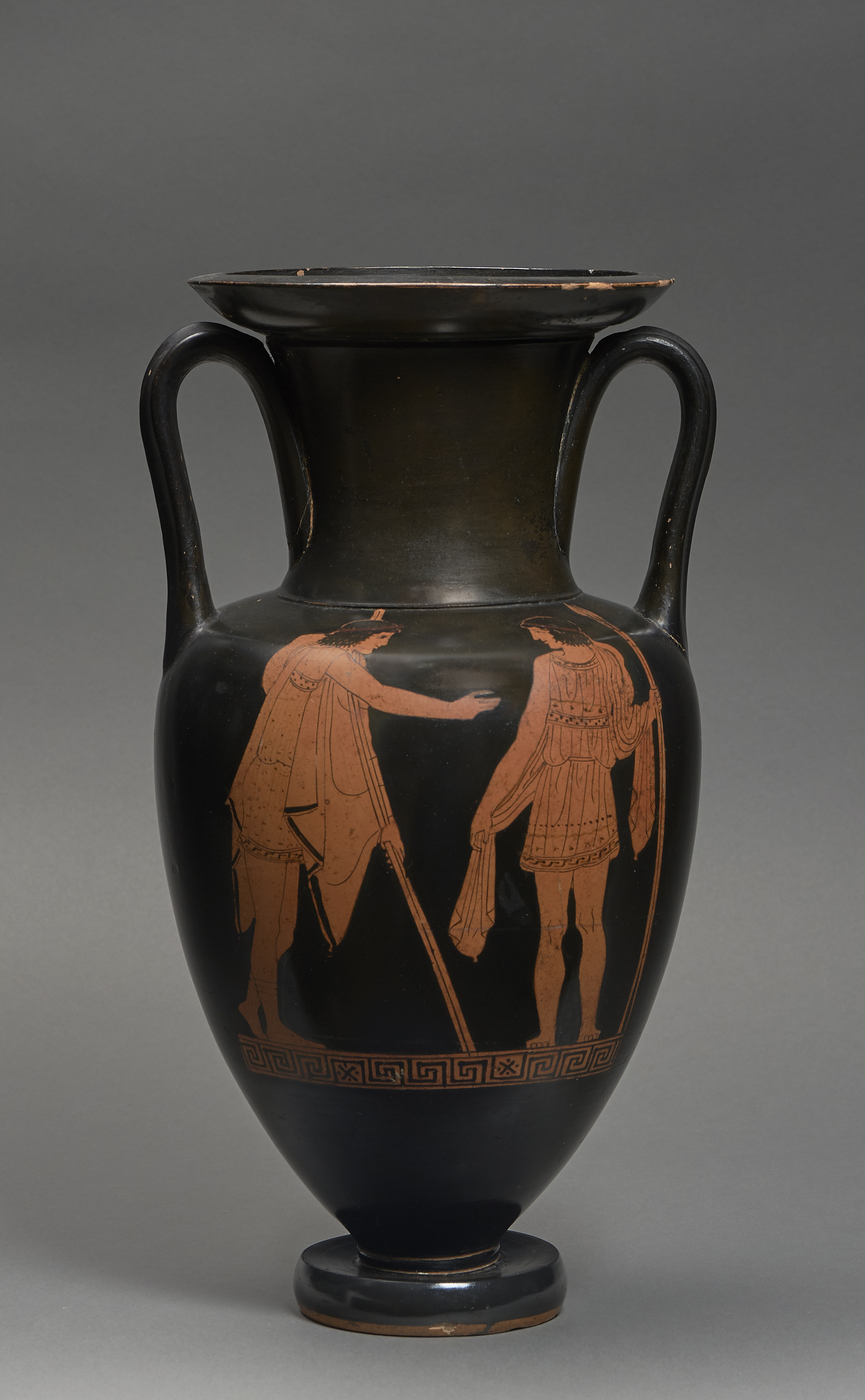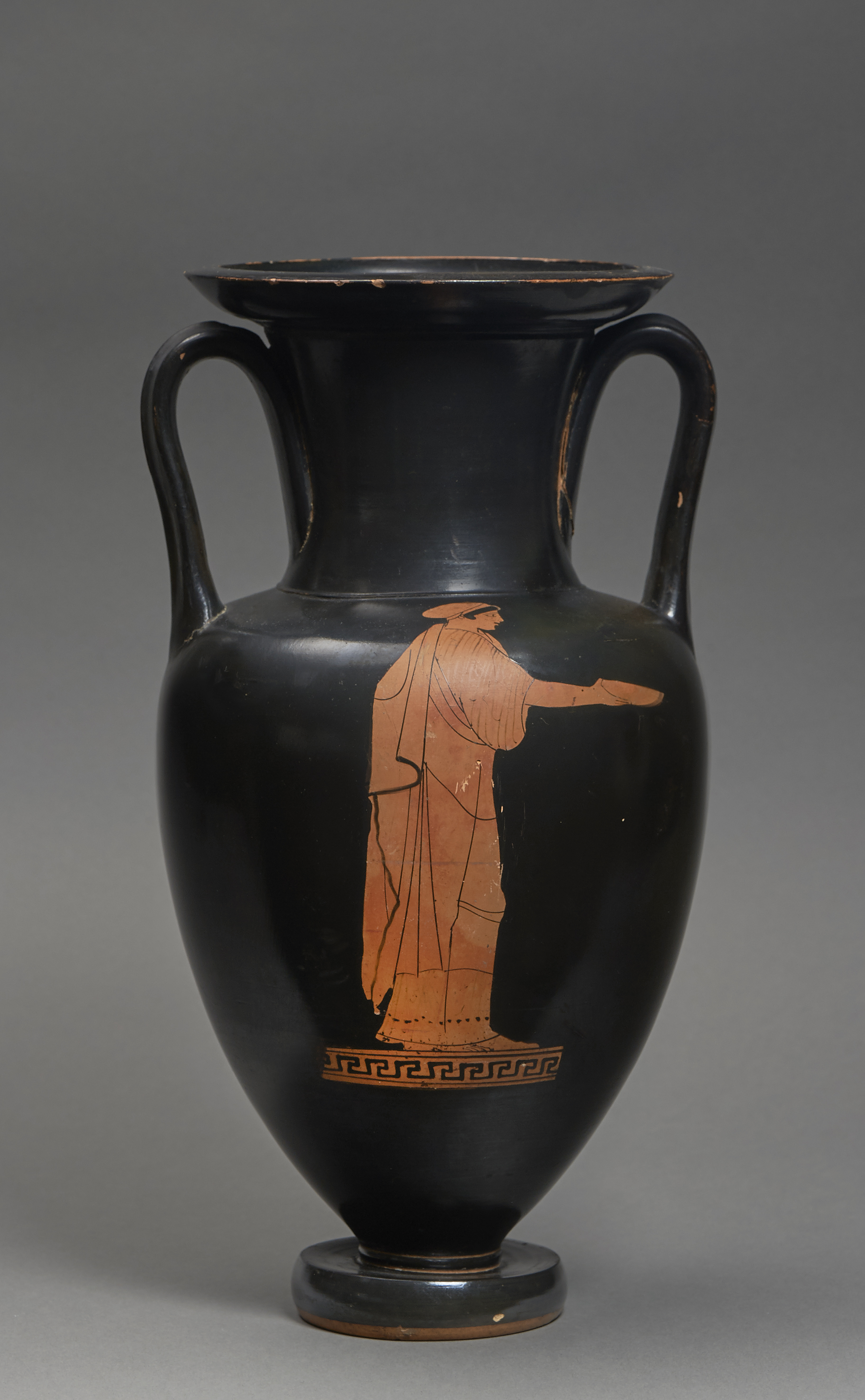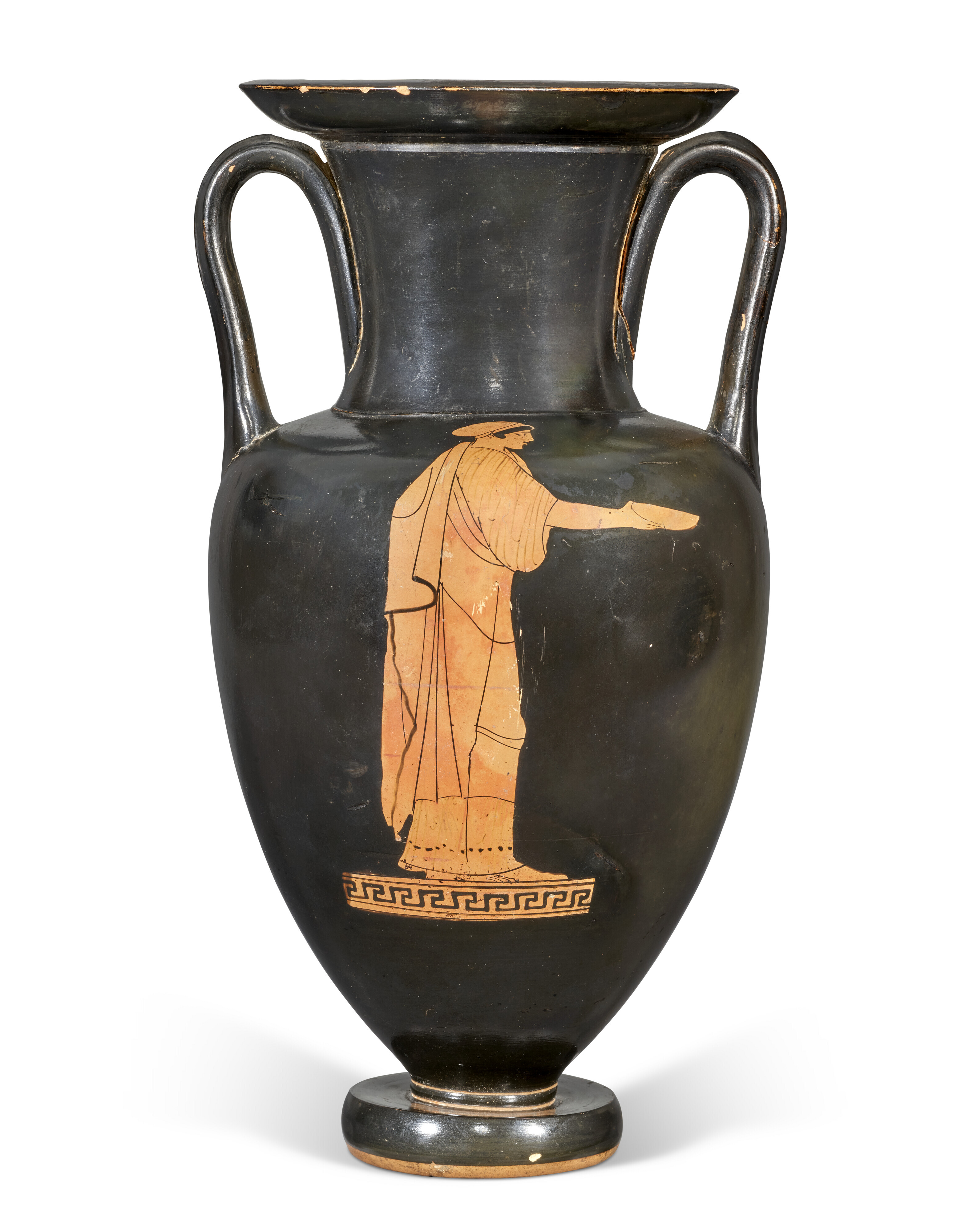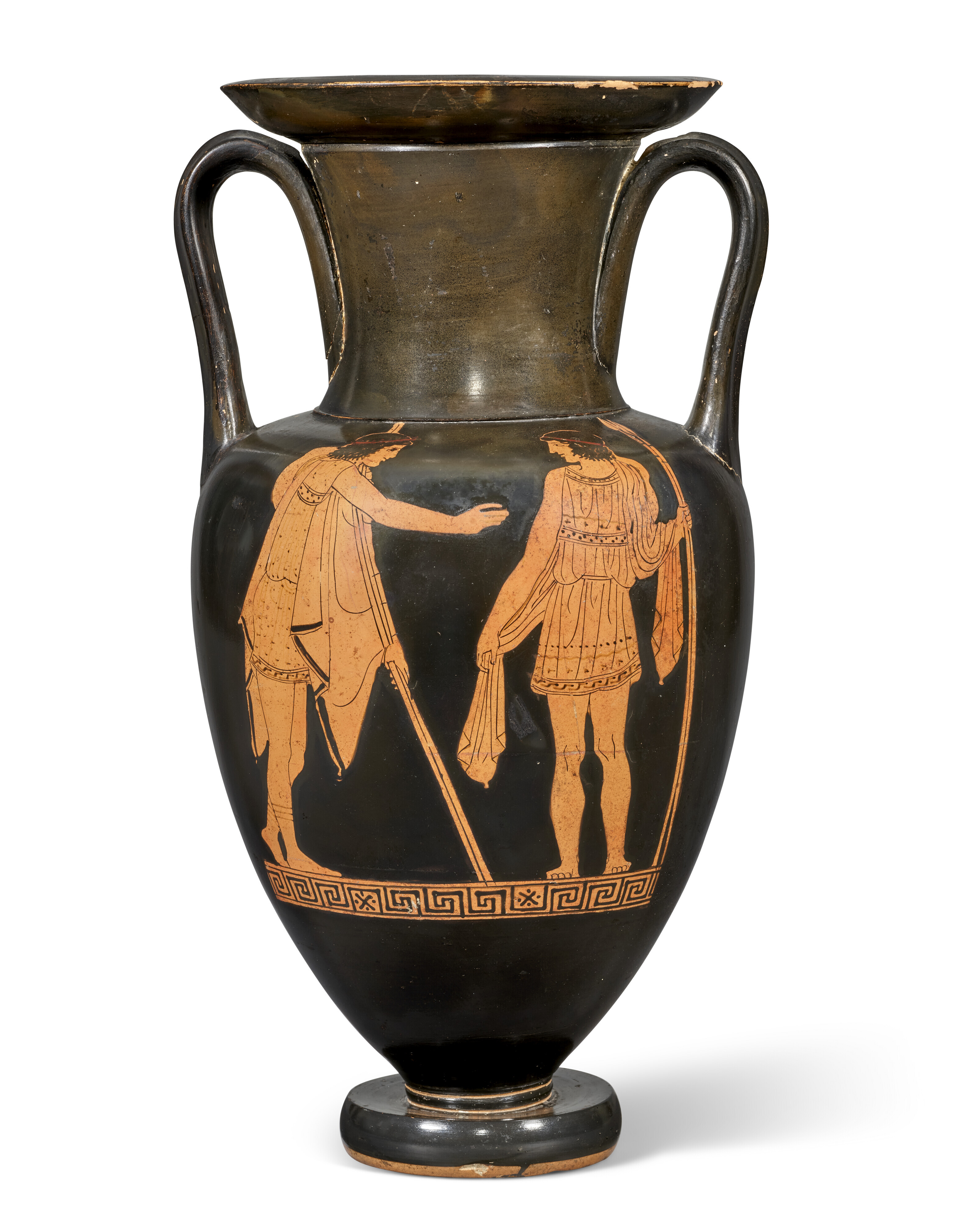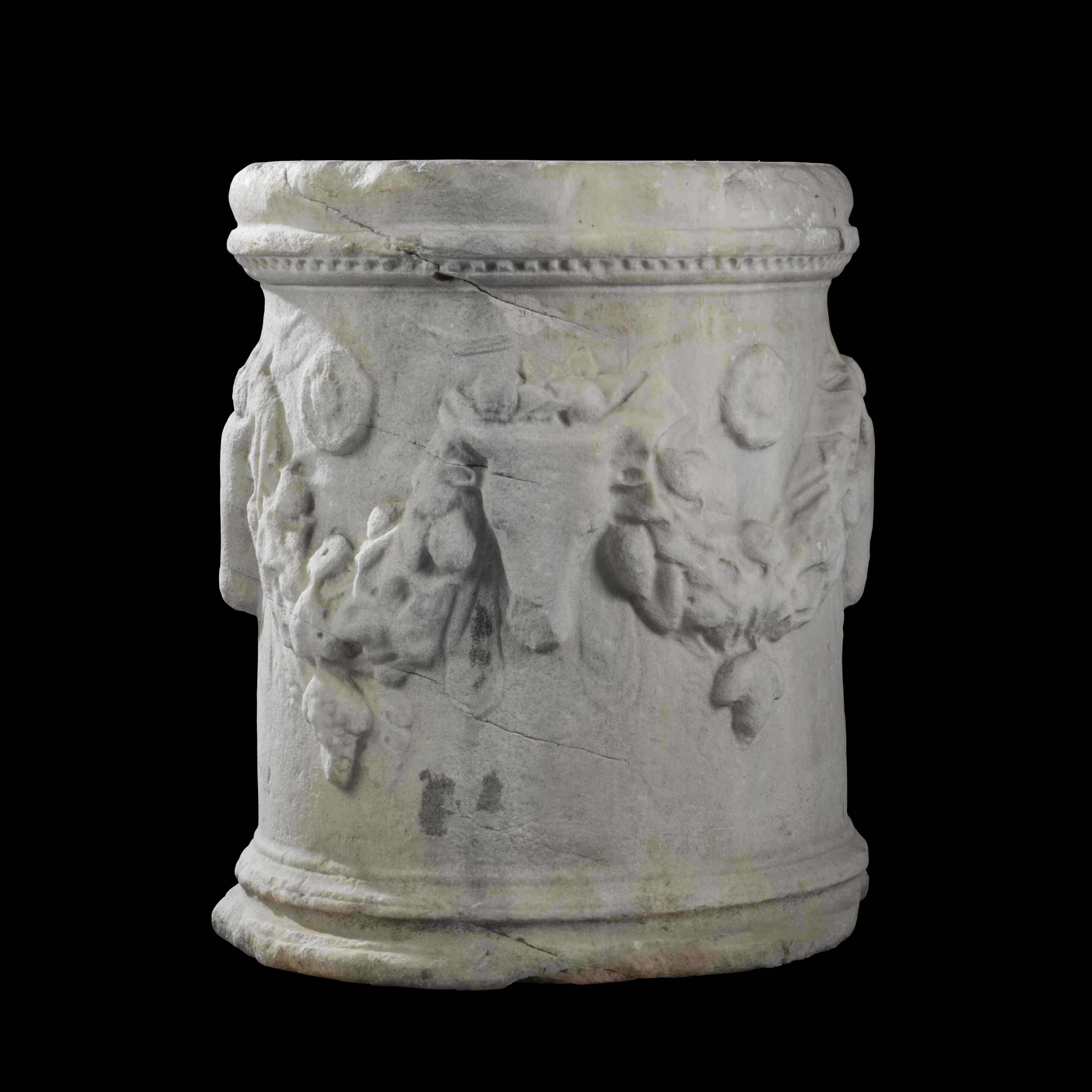Side A depicts two standing youths leaning on their spears and wearing a short chiton and a himation draped over their shoulders. They have mid-length curly hair dressed with a taenia, respectively a wreath and falling on their shoulders;The reverse shows a standing woman to the right wearing a full-length chiton and himation draped over her left shoulder with her hair bound in a saccos. She holds a phiale in her left hand. Very fine work.
Note
The early career of the Sabouroff Painter (470-455 BC) was closely connected to the workshop of Brygos, the Bryguo Painter, Duris and the Penthesilea Painter. During his middle period (455-440) he mostly worked in the workshop of the Achilleus-Painter and decorated Nolan amphorae, lecythoi and pelikes. Through most of his late period, he worked in white-ground as well as red-figure and his white-ground lekythoi are among his finest works. He was a highly prolific painter and nearly 300 vases have been attributed to his hand.
The shape of the vase is termed a Nolan amphora after Nola, Italy, where the first examples of the shape were discovered. Nolan amphorae have a distinctive shape, which is characterized by an ovoid body, an elongated flaring neck, an inverted lip with grooves for a lid, and handles that rise from the shoulder and join the piece at the base of the neck. They were most likely used to store wine, olives, or oil.
